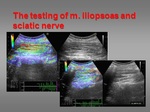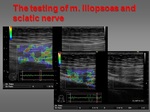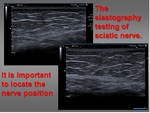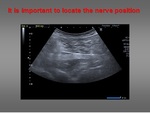Aims and objectives
The clinical entity of piriformis syndrome (PS) is a matter of controversy [1,2].
The ability to recognize PS requires an understanding of the structure and function of the piriformis muscle and its relationship to the sciatic nerve.
Namely,
multiple pathologies have been incorporated in this all-included "piriformis syndrome",
a term that has nothing to do with the presence of fibrous bands,
obturator internus/gemmelus syndrome,
quadratus femoris/ischiofemoral pathology,
hamstring condition,
gluteal disorders.
That is why it is more appropiate to define it as deep gluteal syndrome...
Methods and materials
27 subjects (female=19 and male=8) with a mean age of 44 years were included in the review.
All patients complained to low back pain of several years duration.
During that period,
they had a persistent pain develop in their buttock area around sciatic nerve and piroformis region with spasm.
Patients did not recall any history of trauma.
On clinical examination,
the patients had full range of motion of lower extremity.
They were nontender to palpation above lower back.
Palpation of the sciatic notch was painful...
Results
There was significant difference (p<0.05) in longitudinal and transversal nerve excursion between the healthy and spinally referred leg pain groups.
On ultrasound,
sciatic nerve was visualized as a hyperechoic,
slightly flattened oval structure (Figure 1,
2,
3 and 4).
In first group of healthy persons (18) stiffness of sciatic nerve had lower values of strain index (SI) looking to symptomatic leg pain group (12).
(Fig.11,12,13,14,15,16,17,18,19,20).
In further development in effort to stadardize method,
in healthy group of 42 persons it was shown that the differencies...
Conclusion
The variation of sciatic nerve division at different level of the body is challenging for diagnostic and therapeutic procedure in many clinical and surgical cases.
Quick recognition of sciatic nerve variation (Fig.25) makes surgical approaches more precise and effective (Fig.
26).
Its distribution is associated with different structures and blood vessels which are important to conduct a safe operation and good outcome. The sciatic nerve,
the largest branch of lumbosacral plexus is composed of ventral and dorsal divisions of ventral rami of L4 to S3...
Personal information
Stajic Sava ,
MD,
MSc
Clinical Hospital Center "Dr Dragisa Misovic - Dedinje",
11000 Belgrade,
Milana Tepica 1
[email protected]
+381641374571
References
[1] Hal DM,
Shea A.
Shears,
Calvin Johnson,
Aaron M.
Smathers and Ian J.
Palmer,
The Endoscopic Treatment of Sciatic Nerve Entrapment/ Deep Gluteal Syndrome,
Arthroscopy: The Journal of Arthroscopic and Related Surgery,
2011; 27(2): 172-181
[2] Michel F,
Decavel P,
Toussirot E,
Tatu L,
Aleton E,
Monnier G,
Garbuio P ,
Parratte B,
The piriformis muscle syndrome: An exploration of anatomical context,
pathophysiological hypotheses and diagnostic criteria Annals of Physical and Rehabilitation Medicine 2013; 56:300–311.
[3] Andrade RJ,Nordez A,Hug F,Ates F,Coppieters MW,Pezarat-Correia P,Freitas SR...





